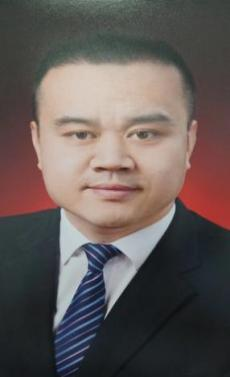

- 兰海楠
性别
男出生年月
1982/2/1所在单位
动物科学技术学院专业
动物遗传育种电话
Email
tougao@jlau.edu.cn
个人情况综述
兰海楠,男,副教授,硕士研究生导师。遗传育种教研室专业教师。长期致力于动物内分泌,衰老,细胞程序性死亡,生殖毒理学等方向的研究。先后主持国家自然基金,吉林省科技厅,吉林省教育厅等科研项目多项,并作为主要参加人参与国家及省部级科研项目多项;作为主要参与人获得吉林省科学技术进步奖一等奖两项,三等奖两项,自然科学学术成果奖三等奖一项;以第一作者或通讯作者在particle and fibre toxicology, Journal of Clinical Endocrinology and Metabolism, International Immunopharmacology, International Journal of Mechanical Science, Molecular and cellular endocrinology, general and comparative endocrinology,molecular and cellular endocrinology等国际期刊发表论文20余篇。并作为Science of the Total Environment, Talanta, International Immunopharmacology, Cell cycle,Aging-us, domestic animal endocrinology, general and comparative endocrinology, Journal of Biochemical and Molecular Toxicology, Toxicology等国际期刊审稿人。
学习工作简历
(1) 2017-09 至今, 吉林农业大学, 动物科学技术学院, 副教授
(2) 2015-07 至 2017-08, 吉林农业大学, 动物科学技术学院, 高级实验师
(3) 2009-09 至 2012-06, 吉林农业大学, 动物营养与饲料科学, 博士
(4) 2006-09 至 2009-06, 吉林农业大学, 动物遗传育种, 硕士
(5) 2001-09 至 2005-07, 吉林农业大学, 动物科学, 学士
教学工作
主讲本科生课程:动物遗传学,动物细胞生物学;
主讲研究生课程(硕士/博士):细胞生物学
主要科研方向
内分泌方向: 在分子水平上探究内分泌激素(GH/PRL)及生长因子(EGF/FGF/Insulin/IGF-1)等生物大分子的细胞行为及作用机理;衰老方向:在体内外模型上,探索生殖系统衰老的分子机制机理;细胞死亡方向:探究不同生理及环境压力下生殖细胞死亡的发生发展机制;生殖毒理学:研究环境毒素对动物生殖系统的毒理学影响及潜在的分子机理。
主要科研项目
主持的科研项目:
1.主持国家自然科学基金(青年基金)项目:《猪生长激素与其受体复合体(GH-GHR)核转运分子机制的研究》;
2.吉林省科技厅优秀青年基金项目: 《膜定位的猪生长激素受体分子靶向细胞核转运的分子机制》;
3.吉林省科技厅自然基金项目: 《内核膜定位的猪GH/GHR调节睾丸细胞增殖的分子机制》;
4.吉林省教育厅等项目:《细胞膜定位的猪生长激素及其受体复合体(GH-GHR)靶向内质网转运的分子机制》;
主要科研成果
仔猪肠道稳态营养技术体系创建与应用 吉林省科学技术奖 一等奖 (排名:6/15) 2020
以预保护模式提高仔猪免疫力健康养殖关键技术创新与应用 吉林省科学技术奖 一等奖 (排名:6/15) 2016
发表文章
以通讯作者发表的SCI论文:
(1)Wu, D., Zhang, M., Bao, T. T., Lan, H. (2023). Long-term exposure to polystyrene microplastics triggers premature testicular aging. Particle and fibre toxicology, 20(1), 35
(2)Wu, D., Wu, Y., Zhang, M., Lan, H. (2023). Aflatoxin B1 exposure triggers inflammation and premature skin aging via ERMCS/Ca2+/ROS signaling cascade. International Immunopharmacology, 124, 110961.
(3)Wu, D., Zhang, Y., Zhao, Q., Wu, M., Li, S., Zheng, X., Lan, H. (2022). The effect of growth hormone-induced cellular behavior and signaling properties on induced cellular senescence in human mesenchymal stem cells. Tissue and Cell, 79, 101963.
(4)Zhao, Q., Zhang, Y., Wu, D., Hainan, L. (2023). The effect of heat stress on the epidermal growth factor (EGF)-mediated intracellular signaling, and changes cell behavior on swine testicular cell. Animal Biotechnology, 34(7), 2990-2998.
(5)Zhang, Y., Zhao, Q., Wu, D., & Lan, H. (2022). The effect of heat stress on the cellular behavior, intracellular signaling profile of porcine growth hormone (pGH) in swine testicular cells. Cell Stress and Chaperones, 27(3), 285-293.
(6)Zhang, Y., Zhao, Q., Wu, D., Li, S., Wu, M., Li, S., Lan, H. (2022). The Cellular Behavior, Intracellular Signaling Profile and Nuclear-Targeted Potential Functions of Porcine Growth Hormone (pGH) in Swine Testicular Cells. Cell Biochemistry and Biophysics, 80(2), 403-414.
(7)Lan, H., Li, W., Li, R., Zheng, X., & Luo, G. (2019). Endocytosis and degradation of Pegvisomant and a potential new mechanism that inhibits the nuclear translocation of GHR. The Journal of Clinical Endocrinology & Metabolism, 104(6), 1887-1899.
(8) Yu-Jiang, Y., Xin, Z., Hai-Nan, L. (2020). JAK2-STAT5 signaling is insensitive to porcine growth hormone (pGH) in hepatocytes of neonatal pig. Animal cells and systems, 24(2), 69-78.
(9) Hainan, L., Huilin, L., Khan, M. A., YuJiang, Y., Hui, Z., Naiquan, Y. (2018). The basic route of the nuclear translocation porcine growth hormone (GH)-growth hormone receptor (GHR) complex (pGH/GHR) in porcine hepatocytes. General and comparative endocrinology, 266, 101-109.
(10) Lan, H., Zheng, X., Khan, M. A., & Li, S. (2015). Anti-idiotypic antibody: A new strategy for the development of a growth hormone receptor antagonist. The International Journal of Biochemistry & Cell Biology, 68, 101-108.
(11) Li, R., Hui, J., Luo, G., Hong, P., Li, L., Yang, Y., Lan, H. (2019). Zinc ions increase GH signaling ability through regulation of available plasma membrane‐localized GHR. Journal of Cellular Physiology, 234(12), 23388-23397.
以第一作者发表的SCI论文:
(1) Lan, H., Li, W., Jiang, H., Yang, Y., Zheng, X. (2014). Intracellular signaling transduction pathways triggered by a well-known anti-GHR monoclonal antibody, Mab263, in vitro and in vivo. International Journal of Molecular Sciences, 15(11), 20538-20554.
(2) Lan, H., Hong, P., Li, R., Suo, L., Anshan, S., Li, S., & Zheng, X. (2017). Internal image anti-idiotypic antibody: a new strategy for the development a new category of prolactin receptor (PRLR) antagonist. Molecular Immunology, 87, 86-93. Molecular Immunology
(3) Lan, H., Liu, H., Hong, P., Li, R., & Zheng, X. (2018). Porcine growth hormone induces the nuclear localization of porcine growth hormone receptor in vivo. Asian-Australasian Journal of Animal Sciences, 31(4), 499.
(4) Hai-Nan, L., Hui-Lin, L., Zi-Qi, Z., Gan, L., Xue-Qi, F., Xin, Z. (2019). Cellular internalization and trafficking of 20 KDa human growth hormone. General and comparative endocrinology, 270, 82-89.
(5) Lan, H., Li, W., Fu, Z., Yang, Y., Wu, T., Liu, Y., Zheng, X. (2014). Differential intracellular signalling properties of the growth hormone receptor induced by the activation of an anti-GHR antibody. Molecular and Cellular Endocrinology, 390(1-2), 54-64.
(6) Lan HaiNan, L. H., Jiang HaiLong, J. H., Li Wei, L. W., Wu TianCheng, W. T., Hong Pan, H. P., Li YuMeng, L. Y., Z. X. (2015). Development and characterization of a novel anti-idiotypic monoclonal antibody to growth hormone, which can mimic physiological functions of growth hormone in primary porcine hepatocytes. Asian-Australasian Journal of Animal Sciences
教材及专著
参与编写著作一部。
获奖信息
作为主要参与者获得吉林科学技术进步奖一等奖 (两项),科学技术进步三等奖(两项),吉林省自然科学奖三等奖(一项)
社会兼职
吉林省细胞生物学学会会员



